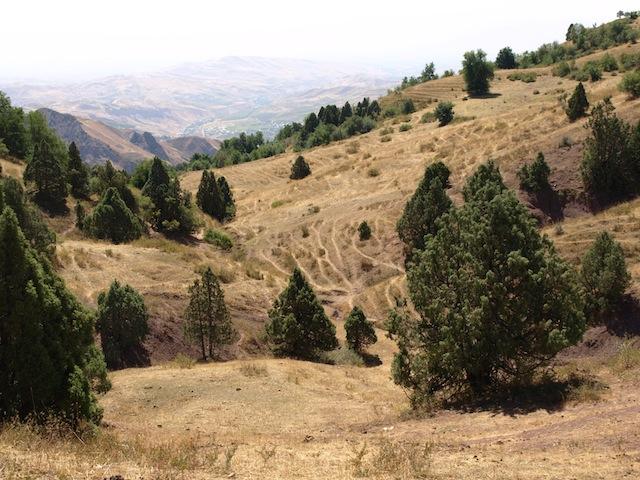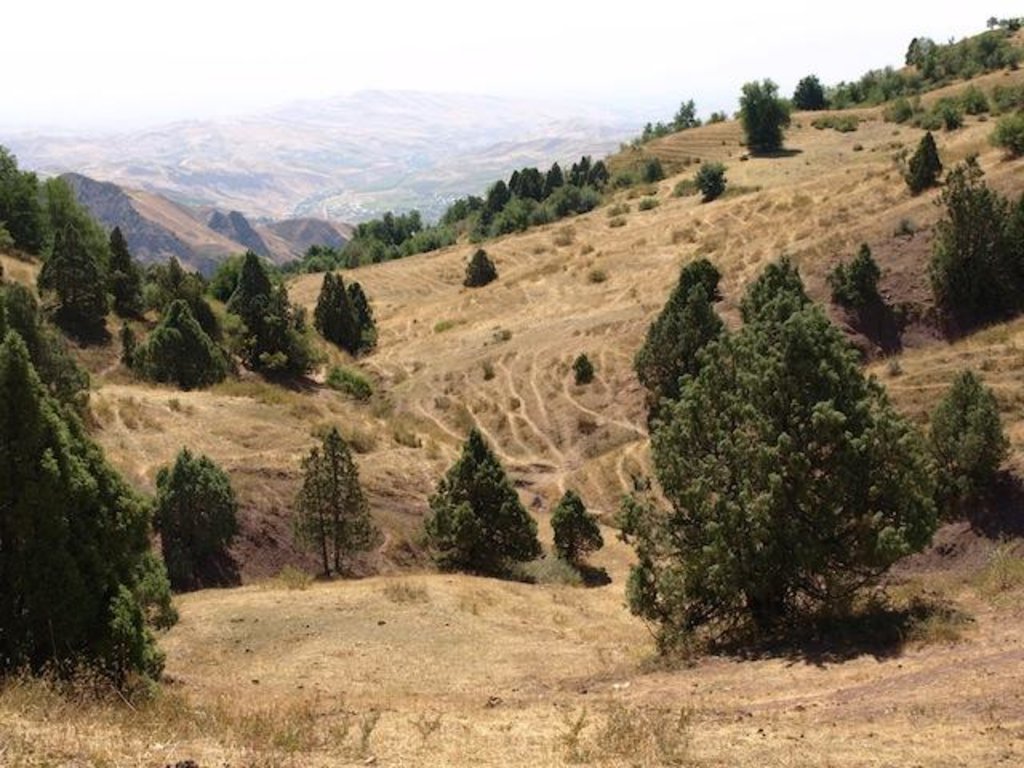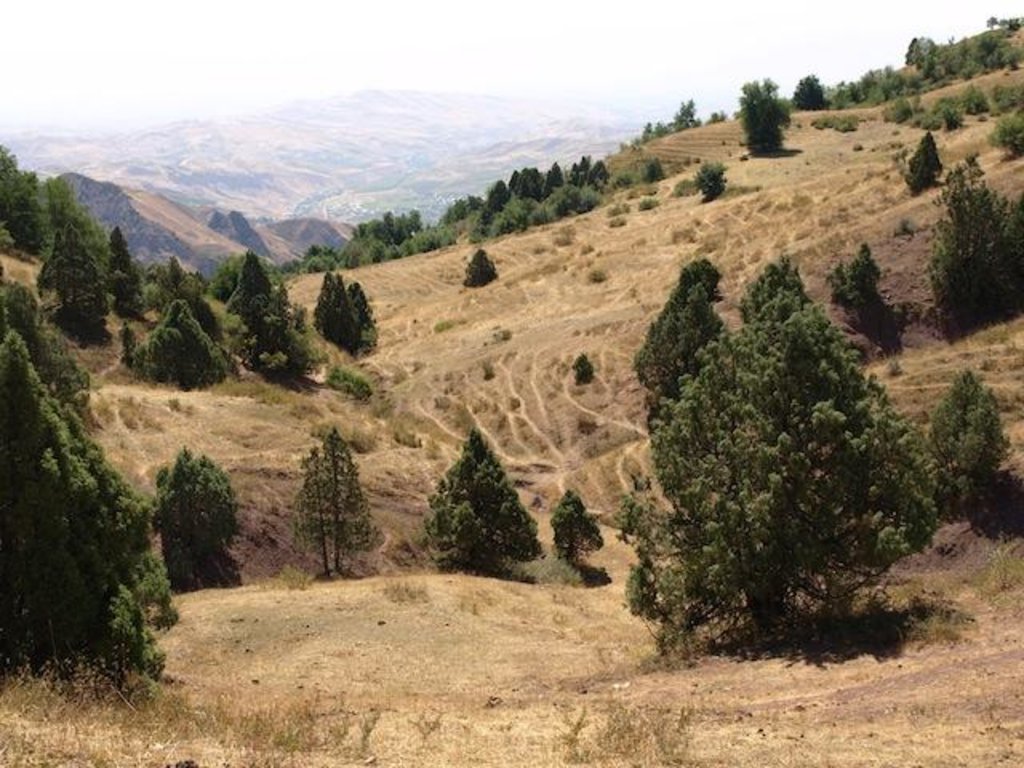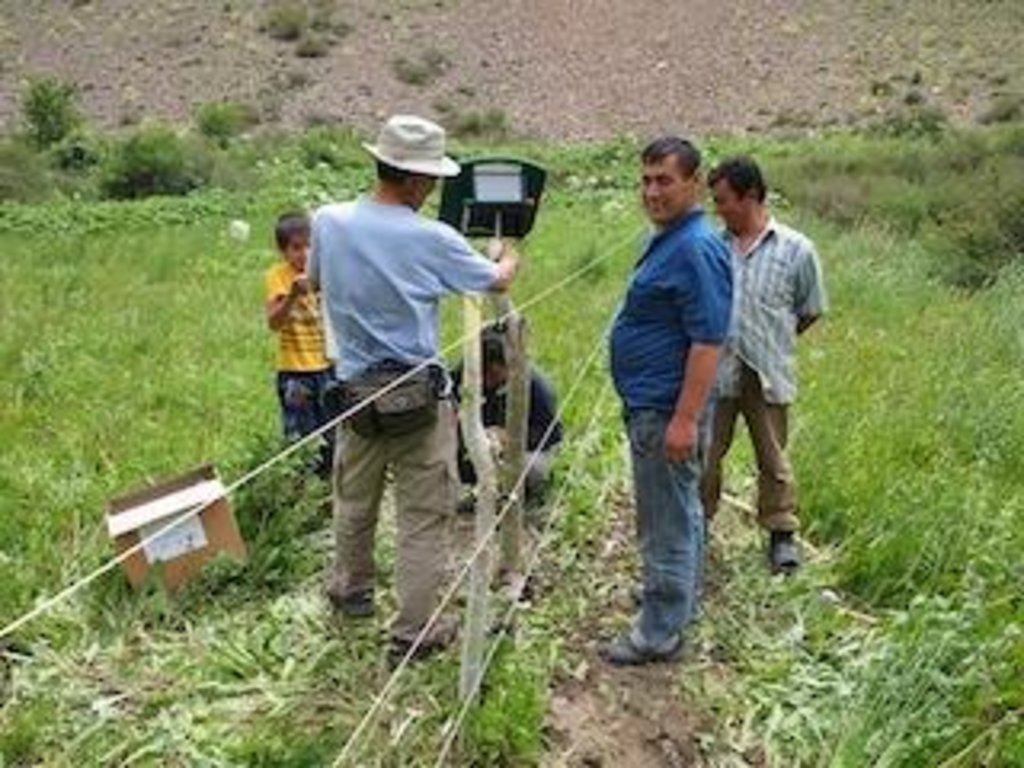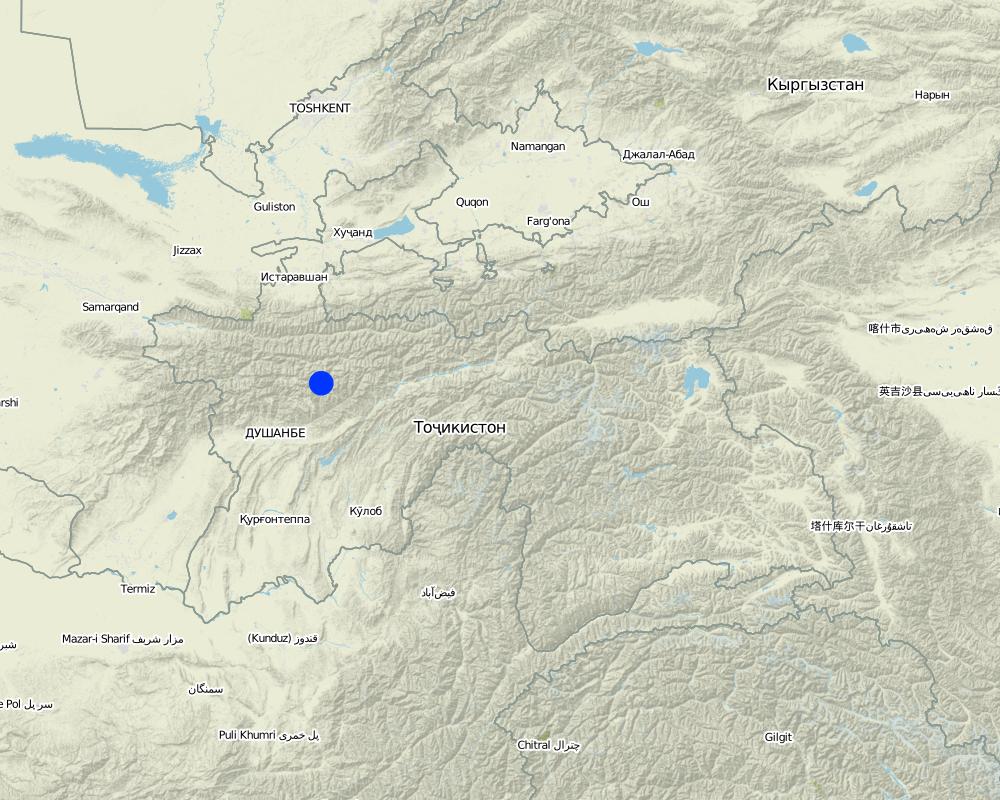Sustainable managements on pasture and forest lands based on natural regeneration by electrified fences [Tayikistán]
- Creación:
- Actualización:
- Compilador: Kakubari Yochitaka
- Editor: –
- Revisor: David Streiff
approaches_2451 - Tayikistán
Visualizar secciones
Expandir todo Colapsar todos1. Información general
1.2 Detalles de contacto de las personas de referencia e instituciones involucradas en la evaluación y la documentación del Enfoque
Especialista MST:
Aidov Madibron
SFA
Federación Rusa
Especialista MST:
Kumalova Rina
FRI
Federación Rusa
translator/assistant:
Shoh Sharipov
Federación Rusa
Nombre de la(s) institución(es) que facilitaron la documentación/ evaluación del Enfoque si fuera relevante)
Shizuoka University - Japón1.3 Condiciones referidas al uso de datos documentados mediante WOCAT
¿Cuándo se compilaron los datos (en el campo)?
11/06/2011
El compilador y la/s persona(s) de referencia claves aceptan las condiciones acerca del uso de los datos documentados mediante WOCAT :
Sí
1.4 Referencia/s al/los Cuestionario(s) de Tecnologías MST
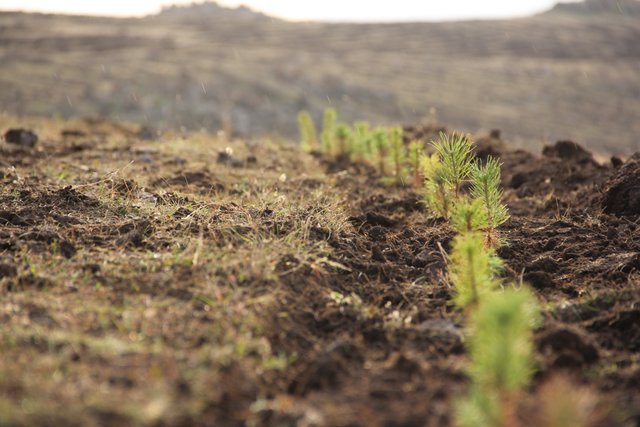
High-altitude afforestation for erosion control [Armenia]
Afforestation is a key technologies to protect soil against erosion and provide a wide range of ecosystem services. In this case, afforestation at high altitudes, which is particularly challenging, with the primary purpose of erosion control were planted in small patches with different methods. They form the basis for future …
- Compilador: Hanns Kirchmeir
2. Descripción del Enfoque MST
2.1 Breve descripción del Enfoque
Sustainable managements on pasture and forest lands based on natural regeneration by electrified fences
2.2 Descripción detallada del Enfoque MST
Descripción detallada del Enfoque MST:
Aims / objectives: The aim is to avoid any animals grazing in the targeted areas by establishing electrified fences around the areas, conserving natural conditions of pasture and forestry lands, strengthening the communities’ incomes growth, and planting trees resilient to climate change, thereby contributing to maintaining soil of the areas healthy.
Methods: The project facilitated the following activities: Setting electrified fences that are generated by solar power, strengthening the regeneration of natural forest tree, planting fruiting trees for their sustainable incomes, planting trees such as juniper, pine, poplar, willow, among others. Planting Rosa canina in side of fence and R.C. grown up 2 meter height a few years later and functions as a natural fence. Electrified fence is moved to other site. Also, the project was heavily involved with farmer participation for the planning, fundraising, and implementation with farmers’ initiative.
Stages of implementation: 1. Awareness raising, 2. On the job training, 3. management activity planning, 4. Implementation, 5. Monitoring, 6. Readjustment based on results, 7. Further replication in new area.
Role of stakeholders: The Project had a leading role in initiation, orientation, awareness raising, mobilization, training, consultancy, input provision and mediation of communication. The local farmers have been actively participating, have provided labor input / financial contribution, provided indigenous knowledge and skills. Local authorities - providing land titles, participation in planning and decision making process. There are 5 households involved with in this project. The two Tajik communities (Duoba in Hisor and Kumarg in Ayni), each of which is consisting of 35 members. The members of all households took part in discussion rounds and training. Women: farmers came to the discussions together with their wives in certain level; the women took part in training, in implementing almost all of the adoption measures, and equally benefited from the project. However, they were not involved in decision making.
2.3 Fotos del Enfoque
2.5 País/ región/ lugares donde el Enfoque fue aplicado
País:
Tayikistán
Región/ Estado/ Provincia:
Tajikistan
Especifique más el lugar :
Hisor/ Ayni
Map
×2.6 Fechas de inicio y conclusión del Enfoque
Indique año del inicio:
2009
Año de conclusión (si el Enfoque ya no se aplica):
2012
Comentarios:
We have performed to collect about various ecological disasters in Tajikistan since Sep.2009, and over 75 base line research sites are done by Japanese Society of Promotion for Science (JSPS). Japanese International Cooperation Agency (JICA) supported us. Research title is as follow; Reforestation and forestation in aim of reduction of generation of greenhouse gases and lessening of global warming
2.7 Tipo de Enfoque
- proyecto/ basado en un programa
2.8 Propósitos/ objetivos principales del Enfoque
The Approach focused mainly on SLM with other activities (natural regeneration, pasture management, protecting fruits trees, strengthening community incomes, resilient to climate change )
The aim is to avoid any animals grazing in the targeted areas by establishing electrified fences around the areas, conserving natural conditions of pasture and forestry lands, strengthening the communities’ incomes growth, and planting trees resilient to climate change, thereby contributing to maintaining soil of the areas healthy.
The SLM Approach addressed the following problems: Lack of land tenure rights implementation. Nominal state farm reorganization. Low agricultural production - lands depleted of nutrients, very low yields, no crop rotation, all of which have led heavy concentration on overgrazing by domestic cattle. Soil degradation particularly by heavy precipitation and gully formation. Lack of technical knowledge and awareness of soil & water conservation measures. Lack of cash to invest in development of land - just limited capacity to invest but need external financial input. Poverty - underlying cause of general lack of potential to invest in development.
2.9 Condiciones que facilitan o impiden la implementación de la/s Tecnología/s aplicadas bajo el Enfoque
disponibilidad/ acceso a recursos y servicios financieros
- impiden
Lack of land tenure rights implementation. Nominal state farm reorganization. Low agricultural production - lands depleted of nutrients, very low yields, no crop rotation, all of which have led heavy concentration on overgrazing by domestic cattle. Soil d
Treatment through the SLM Approach: 1) The project was mainly supported by Japan Society for Promotion of Science and Japan International Cooperation Agency with some portion of Tajik government’s sources. However, the inputs (poles and wires) are almost fully available on the local market
entorno institucional
- impiden
1) The project was mainly supported by Japan Society for Promotion of Science and Japan International Cooperation Agency with some portion of Tajik government’s sources. However, the inputs (poles and wires) are almost fully available on the local market
Treatment through the SLM Approach: Knowledge and technologies are shared with S.F.A. in Dushanbe when necessary. By coordinating with S.F.A., the project obtained the right to use the land for planting. As well, local offices of State Forest Agency and local authorities and communities are
marco de trabajo legal (tenencia de tierra, derechos de uso de tierra y agua)
- facilitan
The existing land ownership, land use rights / water rights helped a little the approach implementation: I think it is very serious relationship between Land user ship and local citizens. and forest code is not coming enter on current datum. I think it is very important to be managed by new forest code.
- impiden
Implementing the land tenure law and the privatization of state farms is still a difficult process with many inconsistencies for people claiming a land title in the area.
Treatment through the SLM Approach: AS shown above, by coordinating with State Forest Agency, the project was able to obtain land usage agreement on specific land plots.
3. Participación y roles de las partes interesadas involucradas
3.1 Partes interesadas involucradas en el Enfoque y sus roles
- usuarios locales de tierras/ comunidades locales
Men and women have both played an equal part in the orientation and planning sessions; men have played bigger role in the organization of activities, in the implementation of more manual work, whereas, women took part in the lighter work and in routine maintenance
- especialistas MST/consejeros agrícolas
- profesores/ niños en edad escolar/ estudiantes
- ONG
- sector privado
- gobierno local
- gobierno nacional (planificadores, autoridades)
- organización internacional
3.2 Involucramiento de los usuarios locales de tierras/ comunidades locales en las distintas fases del Enfoque
| Involucramiento de los usuarios locales de tierras/ comunidades locales | Especifique quién se involucró y describa las actividades | |
|---|---|---|
| iniciación/ motivación | apoyo externo | farmers meeting with the team for orientation explaining goals, objectives. The communities who had strong understanding and willingness have only been selected. |
| planificación | interactivo | on site planning with farmers |
| implementación | interactivo | training on the job, material inputs, and labor provision, cross visits |
| monitoreo y evaluación | interactivo | Visits from the team at least once a month since the beginning, communications on ongoing activities, finding solutions. |
| Research | auto-movilización | The team shares with the farmers the findings. |
3.3 Flujograma (si estuviera disponible)
Descripción:
Organization of the sustainable Land management for pasture and forest lands is described in organization chart. It will be divided with three parts; career training, Basic research and afforestation.
Autor:
yoshitaka Kakubari (Univ. of Shizuoka, Japan)
3.4 La toma de decisiones en la selección de Tecnología(s) MST
Especifique quién decidió la selección de las Tecnología/ Tecnologías a implementarse:
- principalmente usuarios de tierras con el apoyo de especialistas MST
Explique:
mainly by sustainable land management specialists from Shizuoka University, State Forest Agency, and Forestry Research Institute, with consultation of land users.
Decisions on the method of implementing the SLM Technology were made by mainly by land users supported by SLM specialists. mainly by sustainable land management specialists from Shizuoka University, State Forest Agency, and National Academy of Science, with consultation of land users.
4. Apoyo técnico, fortalecimiento institucional y gestión del conocimiento
4.1 Construcción de capacidades / capacitación
¿Se proporcionó la capacitación a usuarios de tierras/ otras partes interesadas?
Sí
Especifique quién fue capacitado:
- usuarios de tierras
- personal de campo/ consejeros
Si fuese relevante, también especifique género, edad, estatus, etnicidad, etc.
Training provided for local communities, local authorities, State Forest Agency
Forma de capacitación:
- en el contexto de trabajo
- de agricultor a agricultor
- áreas de demostración
- reuniones públicas
- cursos
Temas avanzados:
Training focused on how to plant trees and how to manage them, how to set up the fences, how to use the fences,
4.2 Servicio de asesoría
¿Los usuarios de tierras tienen acceso a un servicio de asesoría?
Sí
Especifique si servicio proporcionado se realizó:
- en los campos de los usuarios de tierras
Describa/ comentarios:
Name of method used for advisory service: Prof.Dr.Yoshitaka Kakubari;
Key elements: consultation on fencing concepts and choice for preventing from overgrazing, capacity building in strategy design, draft development plan for fence managements; 4. Land use management design considering soil depth, inclination and exposure. 5. Consultation on irrigation design, piping and making water channels 6. Consulting dry farming for good trapping of surface runoff and terrace planting method. 7. Treatment of tree saplings and transportation to the field. 8. Treatment of tree sapling on nursery, light and water regulation. 9. Grand treatment and cleaning, transportation of fertilization 10. Consultation on Planting, and judgment of leaf
Advisory service is totally inadequate to ensure the continuation of land conservation activities; The extension system is inadequate to ensure continuation of activities. The government branches need more development and organization to become able to manage land conservation activities; an independent advisory service is not in place, the only potential still exists within the DWHH Project
4.3 Fortalecimiento institucional (desarrollo institucional)
¿Se establecieron o fortalecieron instituciones mediante el Enfoque?
- sí, un poco
Especifique el nivel o los niveles en los que se fortalecieron o establecieron las instituciones:
- local
- advising to make a land use managements
4.4 Monitoreo y evaluación
¿El monitoreo y la evaluación forman parte del Enfoque?
Sí
Comentarios:
bio-physical aspects were regular monitored by other through observations; indicators: Frequent visits and observations by the project team - tree planting, growing situation, regeneratio
bio-physical aspects were regular monitored by None through measurements; indicators: Ad hoc observations by the project team - labor availability, etc.
technical aspects were ad hoc monitored by None through observations; indicators: Regular measurements by the project team- fodder produced cent/ha, vegetables
socio-cultural aspects were regular monitored by None through observations; indicators: Ad hoc observations by land users and frequent visits by the project team
economic / production aspects were ad hoc monitored by None through measurements; indicators: Ad hoc observations by land users and frequent visits by the project team - technology adaptation ba
area treated aspects were None monitored by None through observations; indicators: None
management of Approach aspects were None monitored by None through observations; indicators: None
There were no changes in the Approach as a result of monitoring and evaluation: There were no changes in the approach. However, the trees planted by the local communities after technical advice and demonstration was not appropriately planned, therefore, after the monitoring and evaluation, they were re-planted. Also, the project team realized that it would be better to have plant relatively young trees as they adapt better in the targeted areas.
There were few changes in the Technology as a result of monitoring and evaluation: I'm able to confirm them after and after they can treat tools and planting materials before they have done. It was very roughly to treat root system of planting saplings, therefore material becomes very weak and easy to die.
4.5 Investigación
¿La investigación formó parte del Enfoque?
Sí
Especifique los temas:
- ecología
Proporcione detalles adicionales e indique quién hizo la investigación:
It focuses on observation of the trees and other plants in the fenced areas, especially regeneration of originally seeded plants. Tree growth rates and damages of grazing are recorded inside and outside of fencing area. For getting evidence by electric fences, we will try a small experiment. We shall confirm that electric fence protects plants from grazing of domestic animals.
Research was carried out both on station and on-farm
5. Financiamiento y apoyo material externo
5.1 Presupuesto anual para el componente MST del Enfoque
Si no se conoce el presupuesto anual preciso, indique el rango:
- 10,000-100,000
Comentarios (ej. fuentes principales de financiamiento/ donantes principales):
Approach costs were met by the following donors: international (Japanese Society Promotion of Sciences (JSPS) and JICA): 100.0%
5.2 Apoyo financiero/material proporcionado a los usuarios de tierras
¿Los usuarios de tierras recibieron financiamiento/ apoyo material para implementar la Tecnología/ Tecnologías? :
No
5.3 Subsidios para insumos específicos (incluyendo mano de obra)
- equipo
| Especifique qué insumos se subsidiaron | En qué grado | Especifique los subsidios |
|---|---|---|
| herramientas | totalmente financiado | Shovel, hoe, pipe, iron wire etc |
- agrícola
| Especifique qué insumos se subsidiaron | En qué grado | Especifique los subsidios |
|---|---|---|
| planting materials | totalmente financiado | |
- construcción
| Especifique qué insumos se subsidiaron | En qué grado | Especifique los subsidios |
|---|---|---|
| madera | totalmente financiado | fences, wooden pole |
- infraestructura
| Especifique qué insumos se subsidiaron | En qué grado | Especifique los subsidios |
|---|---|---|
| irrigation system | totalmente financiado | |
- otro
| Otro (especifique) | En qué grado | Especifique los subsidios |
|---|---|---|
| material transportation | totalmente financiado |
Si la mano de obra de usuarios de tierras fue un insumo sustancial, ¿fue:
- pagado en efectivo?
Comentarios:
It is important to pay to land users and regional villagers.
Also labour is paid in food-for-work
5.4 Crédito
¿Se proporcionó crédito bajo el Enfoque para actividades MST?
No
6. Análisis de impacto y comentarios de conclusión
6.1 Impactos del Enfoque
¿El Enfoque ayudó a los usuarios de tierras a implementar y mantener Tecnologías MST?
- No
- Sí, un poco
- Sí, moderadamente
- Sí, mucho
We have oft said to local villagers how to take a treatment and transportation of materials to pilot site, and how to make a water irrigation channels etc.
¿El Enfoque empoderó a grupos en desventaja social y económica?
- No
- Sí, un poco
- Sí, moderadamente
- Sí, mucho
Yes, it is still not obvious.
¿El Enfoque mejoró cuestiones de tenencia de tierra/ derechos de usuarios que obstaculizaron la implementación de la Tecnologías MST?
- No
- Sí, un poco
- Sí, moderadamente
- Sí, mucho
I have already described in above the paragraph about the reason.
Did other land users / projects adopt the Approach?
- No
- Sí, un poco
- Sí, moderadamente
- Sí, mucho
We make a two pilot sites, Duoba in Hisor and 2 sites Kumarg sites in Ayni districts for implementations to other citizens, and welcome to many guests from other district and sometimes taking many visitors from Governmental organizations.
Did the Approach lead to improved livelihoods / human well-being?
- No
- Sí, un poco
- Sí, moderadamente
- Sí, mucho
It is not still positive changes of local citizens but I believe changing positive in future.
Did the Approach help to alleviate poverty?
- No
- Sí, un poco
- Sí, moderadamente
- Sí, mucho
I have not still any evident for explanations.
6.2 Motivación principal del usuario de la tierra para implementar MST
- producción incrementada
introducing to fruits trees at first , and after introducing forest trees
- incremento de la renta(bilidad), proporción mejorada de costo-beneficio
ntroducing to fruits trees at first , and after introducing forest trees
- carga de trabajo reducida
It is needful and important to attend of women
- pagos/ subsidios
to monitor money flows, and release information.
- reglas y reglamentos (multas)/ aplicación
It needs but it is difficult to introduce at first.
- prestigio, presión social/ cohesión social
it is important to manage together with local citizens
- afiliación al movimiento/ proyecto/ grupo/ redes
it will be getting serious situation by new group and network
- conciencia medioambiental
- mejoramiento estético
- well-being and livelihoods improvement
6.3 Sostenibilidad de las actividades del Enfoque
¿Pueden los usuarios de tierras sostener lo que se implementó mediante el Enfoque (sin apoyo externo)?
- sí
Si respondió que sí, describa cómo:
Finally it will be getting the sustainable land management condition in future without any support.
7. Referencias y vínculos
7.1 Métodos/ fuentes de información
- visitas de campo, encuestas de campo
- entrevistas con usuarios de tierras
7.2 Referencias a publicaciones disponibles
Título, autor, año, ISBN:
JSPS Home Page 'Reforestation and forestation in aim of reduction of generation of greenhouse gases and lessening of global warming, Yoshitaka KAKUBARI, 2009
¿Dónde se halla disponible? ¿Costo?
JSPS, Japan
Vínculos y módulos
Expandir todo Colapsar todosVínculos

High-altitude afforestation for erosion control [Armenia]
Afforestation is a key technologies to protect soil against erosion and provide a wide range of ecosystem services. In this case, afforestation at high altitudes, which is particularly challenging, with the primary purpose of erosion control were planted in small patches with different methods. They form the basis for future …
- Compilador: Hanns Kirchmeir
Módulos
No se hallaron módulos


